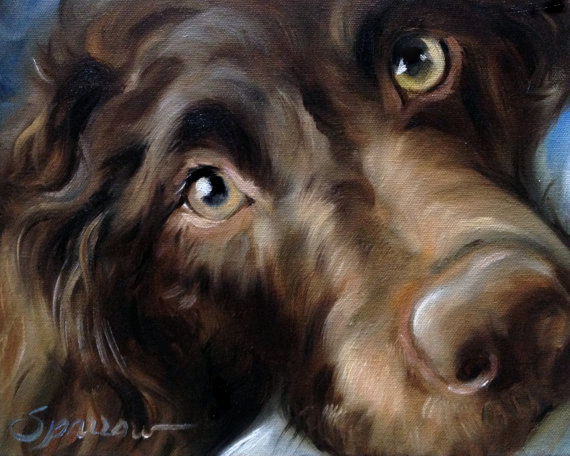
The shape of our dogs’ eyes, and the setting on their head is important in the majority of breeds, particularly working breeds, but too often, we don’t pay as much attention to their color beyond knowing that many of our breed standards call for a dark eye. Why this is, we can’t answer with authority. Some experts claim that dark irises are more efficient than yellow, amber or light colored eyes (called “Bird of prey,” or “hawk” eyes), but given that the wolf, and some big cats have yellow or amber eyes, and they seem to have superb night-vision, we’re not sure this is entirely true. In dark eyes, the amount of melanin is large and its distribution, even, and as melanin becomes less concentrated, the eye color lightens. Pupil size also affects eye color. In bright light, the iris contracts which decreases pupil size and exposes a larger amount of the iris so that its true color is better seen.
It’s possible that domesticated dogs were selectively bred to have darker eyes only for cosmetic appeal, but in at least one breed (the Weimaraner), light amber is acceptable, in another (the Ibizan Hound), clear amber to caramel color is fine, and in the Boykin Spaniel, varying shades of brown is also okay. More breed standards, however, regard such eye colors as a fault (Rottweiler), if not a disqualification (Cane Corso and Polish Lowland Sheepdog).
Boykin Spaniel by Mary Sparrow
www.marysparrowsmith.net
www.etsy.com/shop/HangingtheMoonShelby

I think that in most terriers their small eyes are less likely to be a target when tackling vermin, which will fight back and may be nearly as large as the terrier.
Makes sense, Linda, thanks for passing this along!